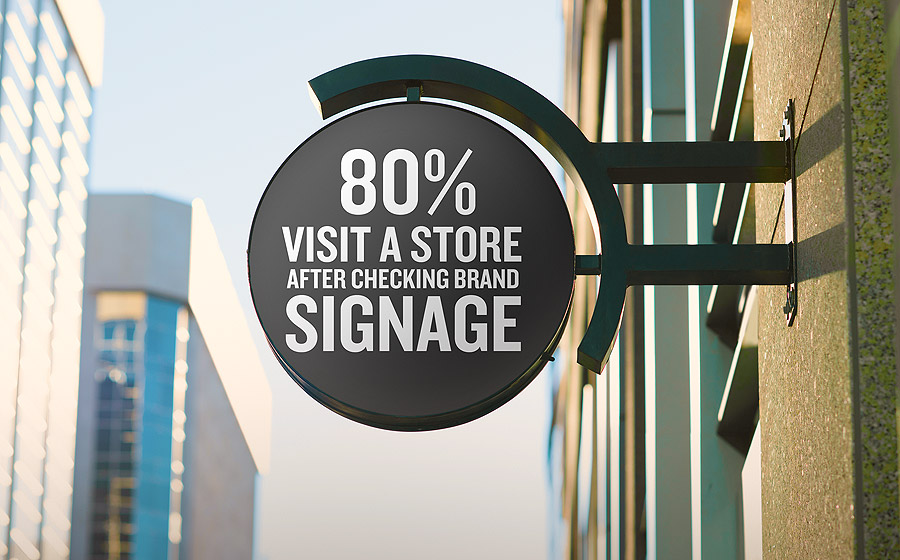The Significance of Branding
Before we dive into the role of signage, let’s briefly review why branding is essential for any business:
-
Identity and Recognition: Your brand is your unique identity in the market. It’s what sets you apart from competitors and helps customers identify your products or services.
-
Trust and Loyalty: A well-established brand fosters trust among consumers. When people trust a brand, they are more likely to become repeat customers and recommend it to others.
-
Consistency: Consistent branding across all touchpoints ensures a cohesive and professional image, reinforcing customer trust.
-
Emotional Connection: Strong brands evoke emotions and resonate with customers on a personal level, leading to long-term loyalty.
The Power of Signage on Branding
Now, let’s explore how signage plays a crucial role in branding:
1. Visual Representation of Your Brand
Signage is often the first visual contact customers have with your brand. It serves as a powerful representation of your brand identity. Elements such as your logo, color scheme, and typography should be consistent across all signage, creating a cohesive visual identity that customers can easily recognize.
2. Location and Visibility
The placement and visibility of your signage can significantly impact brand exposure. Strategic placement in high-traffic areas ensures that your brand remains top-of-mind for potential customers. Whether it’s storefront signage, billboards, or digital displays, location matters.
3. Communicating Brand Values
Signage provides an opportunity to convey your brand’s values and mission. For example, environmentally conscious businesses can use eco-friendly signage materials, sending a clear message about their commitment to sustainability.
4. Enhancing Customer Experience
Effective signage can improve the overall customer experience. Wayfinding signage, for instance, helps customers navigate their physical space with ease, reducing frustration and enhancing their perception of your brand.
Signage Types and Branding
Different types of signage contribute to branding in distinct ways:
1. Exterior Signage
-
Building Facade Signs: These large, eye-catching signs on your storefront or building are often the first point of contact between your brand and potential customers.
-
Monument Signs: Typically placed at entrances, these signs offer a sense of permanence and professionalism, reinforcing brand trust.
2. Interior Signage
-
Lobby and Reception Signs: These create an immediate impression on visitors and set the tone for their interactions with your brand.
-
Wayfinding Signs: Enhance the customer experience by helping people find their way within your facility, minimizing frustration, and improving brand perception.
3. Digital Signage
-
Dynamic Content: Digital displays allow you to adapt and update content quickly, ensuring that your branding efforts stay current.
-
Interactive Elements: Incorporating touchscreens and interactive features can engage customers and leave a lasting impression.
4. Vehicle Signage
-
Vehicle Wraps: Turn your company vehicles into mobile advertisements, increasing brand exposure wherever they go.
-
Fleet Graphics: Consistent branding across a fleet of vehicles reinforces your brand’s professionalism.
Case Studies: Brands Mastering Signage
Let’s examine a few case studies of companies that have harnessed the power of signage to enhance their branding:
-
McDonald’s: The iconic golden arches of McDonald’s are synonymous with fast food. Their distinctive signage is instantly recognizable and communicates reliability and consistency across the globe.
-
Apple: Apple’s minimalist storefront signage mirrors the clean and sleek design of its products. It creates an aspirational and premium brand image.
-
Starbucks: Starbucks employs both exterior signage and interior design to create a cozy and inviting atmosphere, reinforcing its brand as a “third place” between work and home.
Measuring the Impact
Effectively measuring the impact of signage on branding and customer perception is essential to refining your strategy:
-
Surveys and Feedback: Collect feedback from customers to gauge their perception of your brand after exposure to signage.
-
Sales and Foot Traffic: Analyze sales data and foot traffic patterns to assess the correlation between signage changes and business performance.
-
Brand Recognition: Conduct brand recognition surveys to determine how well your signage helps customers recall your brand.
-
A/B Testing: Experiment with different signage designs or placements and measure their impact on customer behavior.
Conclusion
Signage is a dynamic and influential tool for shaping brand identity and customer perception. When harnessed effectively, it can elevate your brand above competitors, create lasting emotional connections with customers, and drive loyalty. Investing in signage that aligns with your brand values and consistently delivers a memorable experience can yield substantial returns in both the short and long term. So, remember, the next time you see a sign, it’s not just a sign—it’s a powerful branding opportunity.
For more information on Signage and Branding, please contact our local Dynagraph representative.





